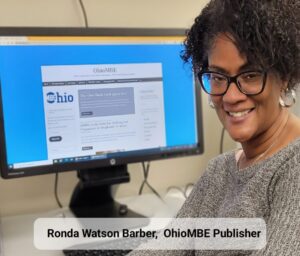COLUMBUS – Yesterday, the Ohio Citizens Redistricting Commission (OCRC) submitted their formal redistricting report and maps to the Ohio Redistricting Commission (ORC). The OCRC report contains an in-depth look into the OCRC’s extensive public input and a detailed breakdown of the group’s “unity maps,” as revealed last week. It also includes the first, full set of maps collectively gathered from everyday Ohioans to inform the official redistricting process, including a look into minority representation districts. View the OCRC report here.
The Sept. 1 submission of OCRC’s report meets the first constitutional deadline for the ORC to approve a new state legislative map. OCRC’s unity maps are the culmination of a four-month-long engagement process that took place in diverse communities throughout the state. They consist of two ideal, state legislative maps of Ohio, informed by over 2,350 community maps and testimonies submitted by hundreds of Ohioans eager to participate in the redistricting process.
The unity maps are constitutionally compliant. With the help of mapping experts, the OCRC developed these maps based on constitutional requirements, citizen-derived principles of redistricting, and a wide variety of preferences that came out of public input. Input for the maps was gathered several months before the ORC kicked off the official engagement process.
To meet constitutional compliance, OCRC’s unity maps include:
- Representational Fairness – Ensuring that one political party is not overrepresented in the allotment of seats and districts (Note: A 54% Republican/46% Democratic representational fairness ratio is required.)
- Equal Population – Using the whole population of Ohio as determined by the latest census (Note: In 2020, Ohio’s whole population was 11,808,848.)
- Keeping Communities Together – Drawing fair districts to protect communities by minimizing the splitting of counties, townships, and cities
OHIO HOUSE: UNITY MAPS
| Representational Fairness | A fair House map must have 55 Republican-leaning districts and 44 Democrat-leaning districts. |
| Equal Population | Each of Ohio’s 99 House districts must contain between 113,317 and 125,245 people. |
| Keeping Communities Together | Each county must be drawn with as many whole districts within county boundaries as possible. (22 counties trigger this requirement*.) Counties with populations within the range of one House district must be drawn as whole House districts and cannot be split apart. (2 counties trigger this requirement.) Cities and townships with a population of 59,641 to 119,281 must be kept together as much as possible. (5 cities trigger this requirement.) Districts cannot split more than one township or city. *For the relevant list of counties, please refer to the report. |
OHIO SENATE: UNITY MAPS
| Representational Fairness | A fair Senate map must have 18 Republican-leaning districts and 14 Democrat-leaning districts. |
| Equal Population | Each of Ohio’s 33 Senate districts must contain between 339,951 and 375,735 people. |
| Keeping Communities Together | Senate districts shall be composed of three contiguous House districts. Each county must be drawn with as many whole Senate districts within county boundaries as possible. (8 counties trigger this requirement.*) Counties not large enough to contain one whole Senate district (but have at least one House district) shall be part of only one Senate district. (15 counties trigger this requirement.*) *For the relevant list of counties, please refer to the report. |
MINORITY REPRESENTATION
Ohioans want a transparent process we can trust, where communities remain whole and where voters’ representational power hasn’t been diluted by “packing and cracking,” especially Black voters.
A fair map includes 15 minority representation districts in the Ohio House and 6 minority representation districts in the Ohio Senate where Black voters have a substantial opportunity to be represented electorally.
